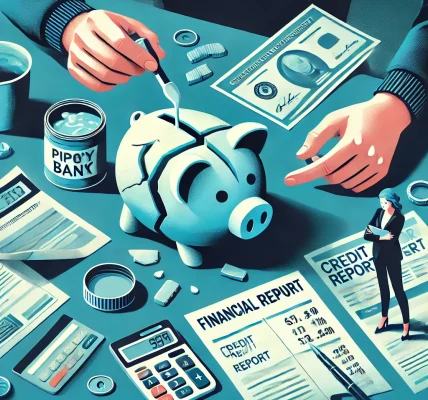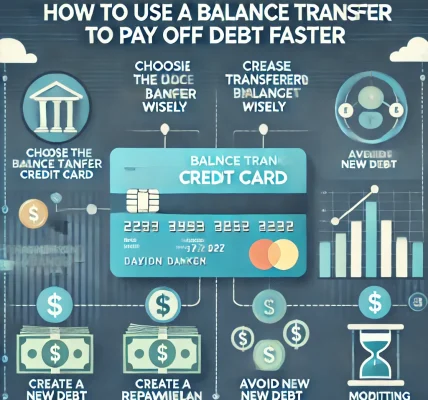Your credit report plays a crucial role in your financial health, impacting your ability to get loans, credit cards, and even employment opportunities. If your report contains negative items, they can lower your credit score and make borrowing more expensive. Fortunately, you can take legal steps to remove inaccurate, outdated, or unfair negative marks from your credit report.
In this step-by-step DIY guide, you’ll learn how to:
✅ Identify negative items on your credit report
✅ Dispute errors and request corrections
✅ Negotiate with creditors for removal
✅ Use legal methods to rebuild your credit
Understanding Negative Items on Your Credit Report
Negative items are any derogatory marks that lower your creditworthiness. They include:
| Negative Item | How It Affects You | How Long It Stays |
|---|---|---|
| Late Payments | Lowers credit score, affects future loans | 7 years |
| Charge-Offs | Marks debt as uncollectible | 7 years |
| Collections | Debt sent to collection agency | 7 years |
| Bankruptcies | Severe impact on credit score | 7-10 years |
| Foreclosures | Makes it harder to get a mortgage | 7 years |
| Repossessions | Affects car loan approvals | 7 years |
| Hard Inquiries | Slight impact, multiple inquiries can hurt | 2 years |
💡 Not all negative items are accurate! Some may be errors, fraudulent, or past their reporting period—these are the ones you can legally remove.
Step 1: Get Your Free Credit Report
Under the Fair Credit Reporting Act (FCRA), you are entitled to one free credit report per year from each of the three major credit bureaus:
- Equifax (www.annualcreditreport.com)
- Experian
- TransUnion
✅ Pro Tip: During financial hardship, you can access weekly free reports at the above website.
Carefully review your report for errors or inaccuracies that might be affecting your credit score.
Step 2: Identify Errors and Inaccuracies
Common credit report errors include:
🔹 Accounts that don’t belong to you (identity theft or mixed credit files)
🔹 Incorrect late payments (you paid on time, but it’s reported late)
🔹 Duplicate accounts (same debt listed multiple times)
🔹 Old debts past the reporting period (e.g., a 7-year-old collection still showing)
🔹 Wrong balances or credit limits
🚨 If you find any inaccurate negative items, you have the legal right to dispute them!
Step 3: Dispute Negative Items (Free and Legal)
Under the FCRA, credit bureaus must investigate disputed items and remove those that cannot be verified. Follow these steps:
A. Submit a Dispute to the Credit Bureau
You can file a dispute online, by mail, or phone with Equifax, Experian, or TransUnion.
✅ What to Include in Your Dispute:
- Your full name and address
- A copy of your credit report with the incorrect item highlighted
- A written explanation of the error
- Any supporting documents (payment receipts, statements, letters, etc.)
🔹 Mail Your Dispute to:
- Experian: P.O. Box 4500, Allen, TX 75013
- Equifax: P.O. Box 740256, Atlanta, GA 30374-0256
- TransUnion: P.O. Box 2000, Chester, PA 19016
🚀 Online Dispute Links:
📅 Bureaus have 30 days to investigate and respond. If they cannot verify the item, it must be deleted from your report.
Step 4: Negotiate with Creditors for Removal
Even if a negative item is accurate, you may be able to get it removed through negotiation.
A. Pay-for-Delete Agreement
In this method, you negotiate with a creditor or collection agency to remove the item in exchange for payment.
✅ Steps to Request Pay-for-Delete:
- Contact the creditor or collection agency in writing.
- Offer to pay the full amount (or a negotiated settlement) only if they remove the item.
- Get the agreement in writing before making payment.
🚨 Not all creditors accept pay-for-delete, but it’s worth trying!
B. Goodwill Letter
If you have one-time late payments, you can request removal by writing a goodwill letter to the creditor.
✅ What to Include in a Goodwill Letter:
- A polite request for removal of the negative mark
- Acknowledgment of the mistake
- A brief explanation (e.g., financial hardship, medical emergency)
- Your good payment history before/after the incident
🔹 Example:
“Dear [Creditor], I’ve been a loyal customer and always made timely payments. However, due to an unexpected financial emergency, I missed a payment in [Month, Year]. I have since corrected this and continued making payments on time. I kindly request a goodwill adjustment to remove the late payment from my credit report.”
👉 Success Rate? Goodwill letters work best if you have a history of on-time payments before and after the missed payment.
Step 5: Check Your Credit Report Again
📅 After 30-45 days, request a new credit report to see if the negative items were removed.
🔹 If the dispute was denied, you can:
✔ File a second dispute with more supporting documents
✔ Request debt validation from the collection agency
✔ Seek professional help (credit counseling or legal advice)
How to Rebuild Your Credit After Negative Items Are Removed
Even after cleaning up your credit report, you should focus on improving your credit score.
✅ Ways to Rebuild Credit:
✔ Make on-time payments (set up auto-pay)
✔ Keep credit utilization below 30%
✔ Open a secured credit card if needed
✔ Request a credit limit increase to reduce utilization
✔ Use credit-builder loans
✔ Monitor your credit regularly for new errors
Final Thoughts
Removing negative items from your credit report legally is 100% possible if you follow the right steps.
Key Takeaways:
✔ Check your credit report for errors (free annually)
✔ Dispute inaccurate items with the credit bureaus
✔ Negotiate with creditors (Pay-for-Delete or Goodwill Letter)
✔ Follow up after 30 days to confirm removal
✔ Continue building good credit habits




